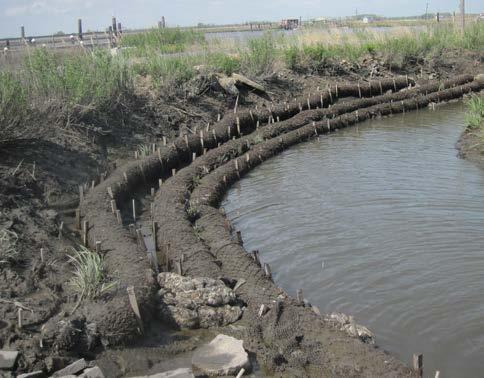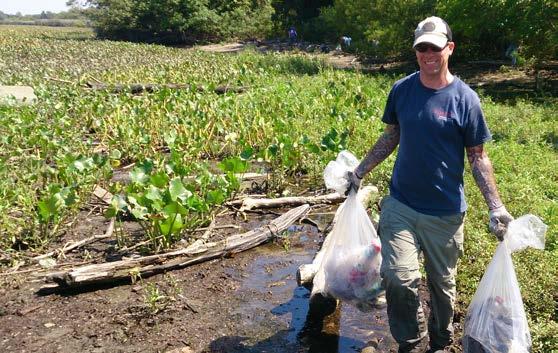
1 minute read
Breathing Life into Shorelines
Fish and wildlife benefit from five shorelines restored by the Partnership for the Delaware Estuary at locations around the Delaware Bay. Four of these “living shorelines” were created in 2014 and planted earlier this year. In June, they were used as part of a training program to show contractors their potential compared to sea walls, riprap, and other manmade

Advertisement
Ridding the River of Trash

Almost 240 people — including our staff — ended their summer by ridding the Delaware River of nearly 33,000 pounds of trash. The Partnership for the Delaware Estuary worked with Living Lands and Waters to promote a series of cleanups and storm drain marking activities aimed at keeping trash out of waterways. Check out the photos on Facebook at http://ow.ly/SxjI2. To learn more about volunteer opportunities like this, as they arise, visit Delaware Estuary.org/Volunteer ■ structures. Delaware sites include the DuPont Nature Center, Lewes Little League ball fields, and Indian River Marina. New Jersey sites include Matt’s Landing and Money Island. Please visit DelawareEstuary.org/ Living_Shorelines for more information, including a map of sites. ■
Moving Our Mussels
People in southern Delaware may soon enjoy cleaner creeks and streams thanks to freshwater mussels. In June, scientists collected dozens of these shellfish from a plentiful source. They then transplanted these into Prime Hook Creek and the St. Jones River, both of which are streams where they once lived but no longer do. Before moving them, they also fitted each with an electronic tag to help us track them in the future. This will help us learn which of these streams can once again support these water-cleaning shellfish. To learn more about the Freshwater Mussel Recovery Program visit DelawareEstuary.org/Freshwater-Mussels. ■





